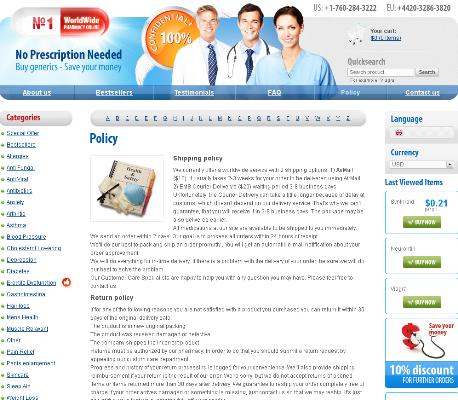| Royal City Drugs |
To Visit Online Pharmacy Click HERE ↓
Motilium and Drug Interactions: Risks to Avoid
What Is Motilium and How Does It Work?
Imagine a pill that brings relief from troublesome nausea and vomiting—Motilium (domperidone) is that solution for many. Unlike medications that act directly on the stomach, Motilium’s power lies in its ability to block dopamine receptors found in the gut and brain. By doing so, it speeds up the movement of food through the digestive tract, helping to prevent queasiness before it starts.
This unique action makes Motilium valuable for people struggling with slow digestion or stomach discomfort. Its effects are felt relatively quickly, often within 30 to 60 minutes of taking a dose, making it a go-to for short-term gastro issues.
| Feature | Description |
|---|---|
| Main use | Relieves nausea, vomiting, and delayed stomach emptying |
| How it works | Blocks dopamine receptors in gut and brain |
| Onset of action | Usually 30–60 minutes |
The Science Behind Drug-drug Interactions Explained

Imagine each medication in your body as a character in a complex story—sometimes, their encounters are friendly, but other times, conflicts arise. Drug-drug interactions happen when two or more medicines affect each other's actions, potentially changing how they work or heightening side effects. For instance, two medications might compete for the same enzyme in the liver, resulting in one lingering longer in your system or not being broken down properly at all.
Motilium, a medication that affects gut movement, is processed in the body by specific enzymes. If another drug inhibits or accelerates these enzymes, the balance is tipped, increasing the risk of unwanted effects or reduced efficacy. This interaction isn’t always obvious, making it essential to recognize how even everyday medicines or supplements can alter the story when motilium is involved.
Common Medications That Clash with Motilium
When reaching for motilium, it's vital to realize some medications may pose unexpected risks. For example, certain antibiotics such as erythromycin and antifungals like ketoconazole can dangerously elevate motilium levels in the body, increasing side effects. Even heart rhythm drugs, including amiodarone or quinidine, can interact, possibly triggering serious cardiac complications.
Over-the-counter remedies should not be overlooked, either—some acid reflux or nausea treatments may contain ingredients that intensify these risks. If you use medications for mental health, like specific antidepressants, these too can clash with motilium.
Knowing these potential conflicts is the first step in keeping your treatment safe and effective.
Hidden Foods and Supplements That Increase Risk

Most people know to watch out for prescription drug interactions, but few realize that what you eat and the supplements you take can also influence how Motilium behaves in your body. For example, grapefruit and its juice can block the enzymes that help break down Motilium, potentially leading to dangerously high drug levels and increased side effects.
Herbal supplements like St. John’s Wort, popular for mood enhancement, can speed up the breakdown of Motilium, making it less effective. Likewise, large amounts of garlic or ginseng can unpredictably affect drug metabolism, posing risks you might not expect.
To minimize danger, always check labels and ask your healthcare provider about the safety of combining Motilium with specific foods or supplements—sometimes, even the most innocent-seeming choices could complicate your treatment.
Warning Signs Your Medication Mix May Be Unsafe
Imagine you’ve just started taking Motilium and another medication, and suddenly, unusual symptoms appear—perhaps an irregular heartbeat, severe stomach cramps, or feelings of extreme drowsiness. These could signal a dangerous drug interaction brewing under the surface. Many people dismiss these changes as harmless, but when new or worsening symptoms occur soon after starting a medication combination, it’s a vital warning your body shouldn’t be ignored.
Not every risk is obvious, and the subtle signs may be easy to overlook. Here’s a quick guide of potential warning signs that your Motilium-medication mix may be causing harm:
| Symptom | What It Might Indicate |
|---|---|
| Irregular heartbeat | Potential cardiac risk due to interaction |
| Severe stomach pain | Possible gastrointestinal reaction |
| Unusual drowsiness | Nervous system effects |
| Muscle stiffness or tremor | Neurological interference |
Proactive Steps to Protect Your Health When Using Motilium
Navigating Motilium safely starts with open communication. Always inform your healthcare provider about all the medicines and supplements you are taking, even herbal remedies. This helps your doctor detect possible interactions early and adjust your treatment accordingly.
Stay diligent about dosage and timing. Never exceed the prescribed amount of Motilium, and try to take it at the same times each day. Skipping or doubling doses can increase your risk of side effects—consistency is key.
Embrace regular check-ins with your pharmacist. Pharmacists are medication experts who can flag potential risks, especially when new medications are added. Their advice can be invaluable for avoiding harmful interactions.
Lastly, educate yourself. Read medication leaflets carefully and use credible sources to learn about Motilium’s interactions. The more informed you are, the better you can advocate for your own safety and well-being throughout your course of treatment.






Email Us
Fill out all the fields below and press submit, a rep will contact you as soon as possible.

